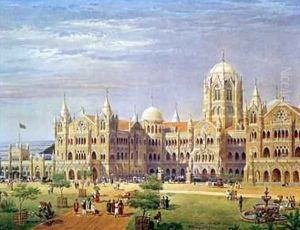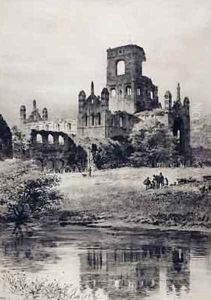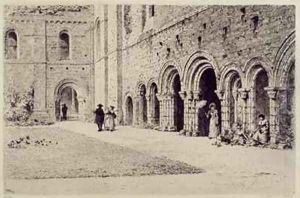Axel Haig Paintings
Axel Herman Haig was a Swedish-born artist who primarily made his name as an architectural etcher and illustrator, although he was also a watercolorist and an architect. Born on December 10, 1835, in Halmstad, Sweden, Haig showed an early interest in art and architecture. However, it wasn’t until after he pursued a career in shipbuilding for several years that he fully devoted his life to art.
In the 1860s, Haig moved to England where his artistic career truly began to flourish. He became well known for his architectural etchings, which were characterized by their intricate detail and dramatic use of light and shadow. Haig had a particular interest in Gothic architecture, and many of his works depict cathedrals and other historic buildings in Europe, capturing the intricate details of their design.
Haig’s talents as an etcher were widely recognized, and he was associated with the Royal Academy in London. His works were exhibited there, and he also published several illustrated books on architecture. Haig traveled extensively to study and draw buildings for his etchings, including journeys across the United Kingdom and continental Europe. He was proficient in capturing the atmospheric effects of different lights, which lent a unique quality to his representations of stone and stained glass.
Despite his success as an etcher, Haig did not abandon his other artistic pursuits. His watercolors also received critical acclaim for their beauty and skill. Additionally, he continued to work as an architect, contributing to the design of buildings in both the United Kingdom and Sweden. His architectural background deeply informed his art, providing him with a profound understanding of the structures he depicted.
Axel Haig passed away on February 23, 1921. His legacy endures through his etchings and illustrations, which continue to be appreciated for their technical excellence and their evocative portrayal of architectural splendor. Haig's work provides a valuable visual record of European architecture at the turn of the 20th century and remains of interest to art historians, architects, and enthusiasts of etching and illustration.


